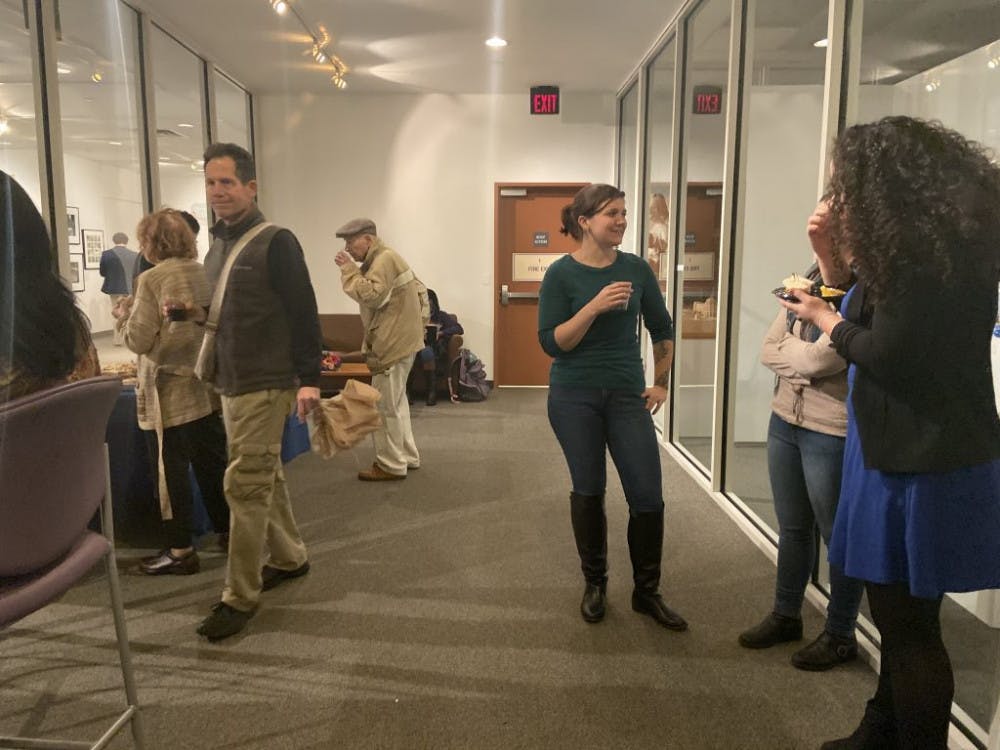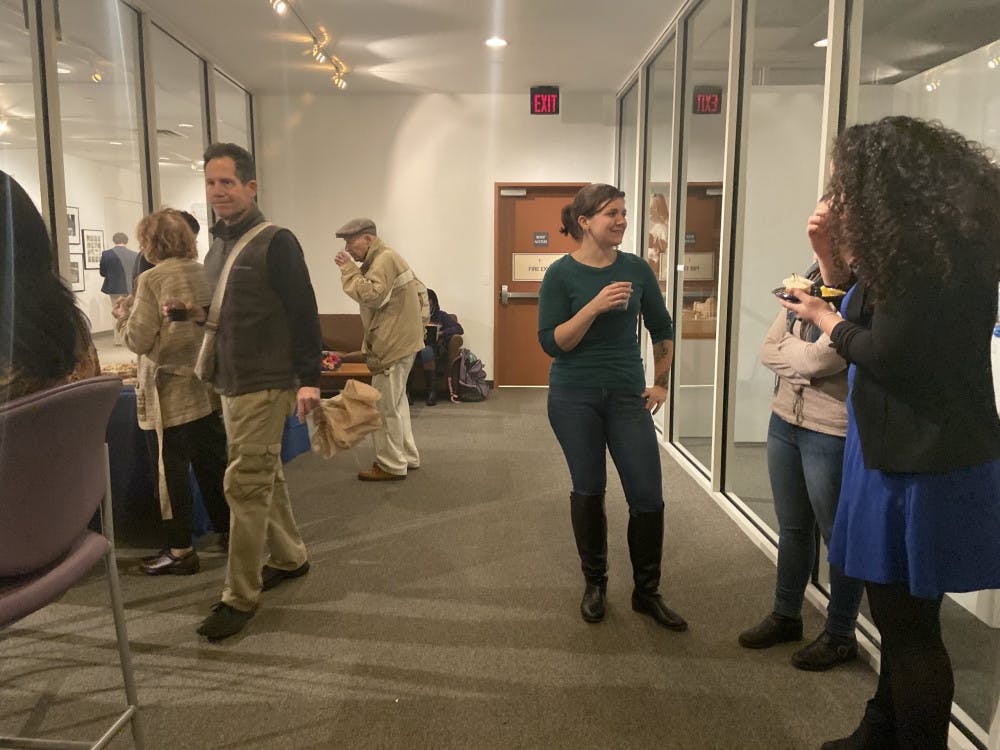Corrections: This article has several errors. First, The Setonian incorrectly identified Samantha Becker as Samantha Decker. Second, in paragraph 5, the word should be “immigrant,” not “migrant.” The artist Nancy Crasco, was misidentified as Nancy Cohen. In paragraph 7, the art piece was identified incorrectly as “Waterfalls,” when it should be written as “Water falls.” In paragraph 12, the artist’s name should be Kimberly Parra, not Pana the work is called “Garden of Living Images,” by Keren Anavy, not “The Babylon Gardens.”
A new exhibit called “New World Water,” curated by Samantha Decker, a graduate student in the museum professions program, opened on Nov. 4 in the Walsh Gallery. Decker said she wanted to highlight the difference between the two halves of water as we see it today. In different parts of the world, there is a lack of accessibility to clean water, which is focused on in the exhibit.
When Jeanne Brasile, the Walsh Gallery director, wanted to do an exhibit about water, Decker is able to present her vision.
“I quickly realized that the topic of water was not that black and white; there was so much more to it,” Decker said. “What I ended up with in this exhibit was a multitude of pieces that were having a conversation with each other. Each piece says something different about water and comes at the theme from a different angle.”
There were several pieces that reflected the theme. Aileen Bassis’ piece, “I Crossed Borders,” highlights the struggles of many different refugees and migrants all around the world as they made their journeys to a better life across large dangerous bodies of water. Her artwork drew attention specifically to the Mediterranean Sea, which has been named the deadliest sea for migrants.
Another piece, Nancy Cohen’s “Polar Bear Light,” showcased the effects of the warming of the globe and what that does to the ecosystems of the polar bears as the ice caps melt and they lose their land. Cohen’s creation depicted the polar bears fading into the picture, which could be interpreted as them fading out of existence.
A work entitled “Waterfalls” was created by an artist named Woolpunk. The piece featured a waterfall that was knitted together with cloth, and woven into it were various pieces of trash commonly found in and around waterfalls. The entire visual was colored white and silver.
Woolpunk wanted to create something about waterfalls. After finding inspiration from waterfalls in the area, she noticed the trash around it and wanted to incorporate it in her work.
“In all of my work, I try to inspire social change,” Woolpunk said. “In this case, I wanted to draw attention to the issue we have with our water today. So much of it has been polluted, and it’s very disappointing.”
Decker talked about the difficult parts of curating an exhibit. She had trouble finding ways to properly utilize the entire space of the gallery. However, her dad’s 3-D model of the gallery helped figure out the best fit for the exhibit.

Attendees at the “New World Water†exhibit gather around and discuss the different artwork.
“The other part that I would say was the most difficult was making sure that all the different perspectives were shown in a cohesive way,” Decker said. “Water is a very broad subject, and many people have different views on it based on their life experiences, so it is important to have all of those views represented.”
Seton Hall students also admired the exhibit. Kimberly Pana, a junior environmental studies and political science major, shared her personal favorites at the exhibit. “The Babylon Gardens piece is probably my favorite in this exhibit,” Pana said. “I just love watercolor, and there was just something about it. It’s something you can’t really put into words, it just kind of drew me in.”
The “New World Water” exhibit depicted many different perspectives on the various roles water has played and continues to play in our society today. It will continue to be on display in the Walsh Gallery until the end of the semester.
“This is a discursive exhibition, meaning that all the pieces are having a conversation with each other,” Brasile said. “As opposed to one message that every single piece is trying to convey, this exhibition instead takes an overlying theme, in this case water, and shows a bunch of different pieces that all have different takes on the subject.”
Alexander Krukar can be reached at alexander.krukar@student.shu. edu. Find him on Twitter @alex_ krukar.





